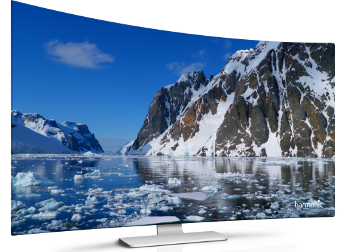Making Live UHD HDR Production and Delivery a Reality
SAN JOSE, CALIF.—Ultra HD with high dynamic range, or UHD HDR: Everyone is talking about it, but few are doing it. Those companies that do have UHD-capable cameras and UHD HDR content are few and far between. Last year NASA partnered with Harmonic to launch NASA TV UHD, the first noncommercial consumer UHD channel in North America. Today, the most notable adopters are the media industry’s streaming service powerhouses, which are leveraging their resources to launch early channels featuring cinematic and episodic UHD HDR content. For broadcasters, though, the powerful appeal of UHD HDR lies in its massive potential in the live sports arena.

Unlike the relatively straightforward workflow for creating post-produced cinematic UHD HDR content, live sports production in UHD HDR demands the capture of UHD HDR images and transmission of this video from the stadium or arena, passed through with graphics and advertisements, for conversion into the appropriate format—typically standard dynamic range (SDR) HD for broadcast or any of a variety of streaming formats.
Because it’s not economically viable to capture UHD HDR and HD content in parallel—using two separate production trucks—at any given live event, broadcasters must decide if it is feasible for them to go ahead and use UHD HDR as a production format. Doing so demands an overhaul of existing infrastructure, and it is likely that for any broadcaster, the move to UHD will go hand in hand with an IP refresh.
In the short term, live production environments will have a continued need for SDI baseband interfacing, but eventually the use of light compression schemes such as TICO, LLVC and VC2 further up the production workflow will relegate baseband video to ingest acquisition. This approach is favored by those broadcasters hoping to see 10G network infrastructure cater to the needs of video production—and specifically mezzanine future-proofed UHD production.
As broadcasters consider UHD HDR production and services, they must address the fact that many early 4K/UHD screens purchased by consumers are not HDR-capable. This situation presents broadcasters with an awkward up-front decision: move ahead now to ensure their brands are associated with a richer (higher-resolution) viewing experience, or wait until the popularity of 4K/UHD grows sufficient to warrant the launch of a service. Facing this quandary, many broadcasters have considered 1080p with up-conversion as an interim step toward UHD. What they are finding, however, is that it’s not safe to assume their existing infrastructure can handle 3G 1080p material. In many cases, 1080i or 720p is the upper limit.
Consequently, many broadcasters that are making the leap to 4K/UHD are building greenfield facilities that allow them to stream this content to their current customers via a different route. BT Sport, for example, is ramping up 4K/UHD not as a broadcast service, but rather as an over-the-top (OTT)-type service featuring live sports.
Addressing the uncertainty still facing most broadcasters with respect to UHD, Harmonic is demonstrating a number of UHD capabilities throughout its booth at IBC2016. There will be an end-to-end native UHD with HDR workflow that includes contribution, playout, and broadcast and multiscreen delivery, and a showcase of UHD encoding powered by the Harmonic PURE Compression Engine, which provides industry-leading video quality and full-frame UHD/4K live encoding. Visitors can also see down-conversion of UHD HDR to HD SDR and various other formats, and a comparison of current HDR formats to highlight the available techniques.
The professional video industry's #1 source for news, trends and product and tech information. Sign up below.
